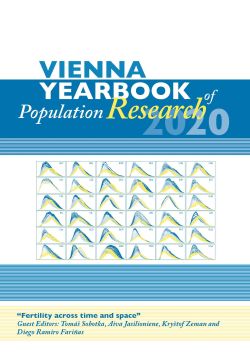
Vienna Yearbook of Population Research 2020, pp. 43-48, 2020/07/22
Fertility across time and space

In this contribution, I argue that future fertility trends will depend on how fertility behavior develops at the intersection of gender and social stratification. This view is based on trends in fertility behavior, such as the gender gap in fertility trajectories, the surprising and strong reversal of fertility trends in the Nordic countries, and the appearance of new social inequalities in fertility. My prediction for future fertility trends is that social stratification will play a larger role than gender in the decision to have children. Because both men and women with low education and poor job prospects will face the most constraints, they will be more inclined than their better educated, higher income counterparts to postpone parenthood and have fewer children. It is likely that in many countries, these trends will result in lower overall fertility levels. Future research on these new fertility trends should link the two systems of gender equality and social stratification, and investigate how the interactions between them operate depending on the institutional context, changes in the economy, and globalization.
Keywords: Fertility; Gender; Social stratification; Globalization